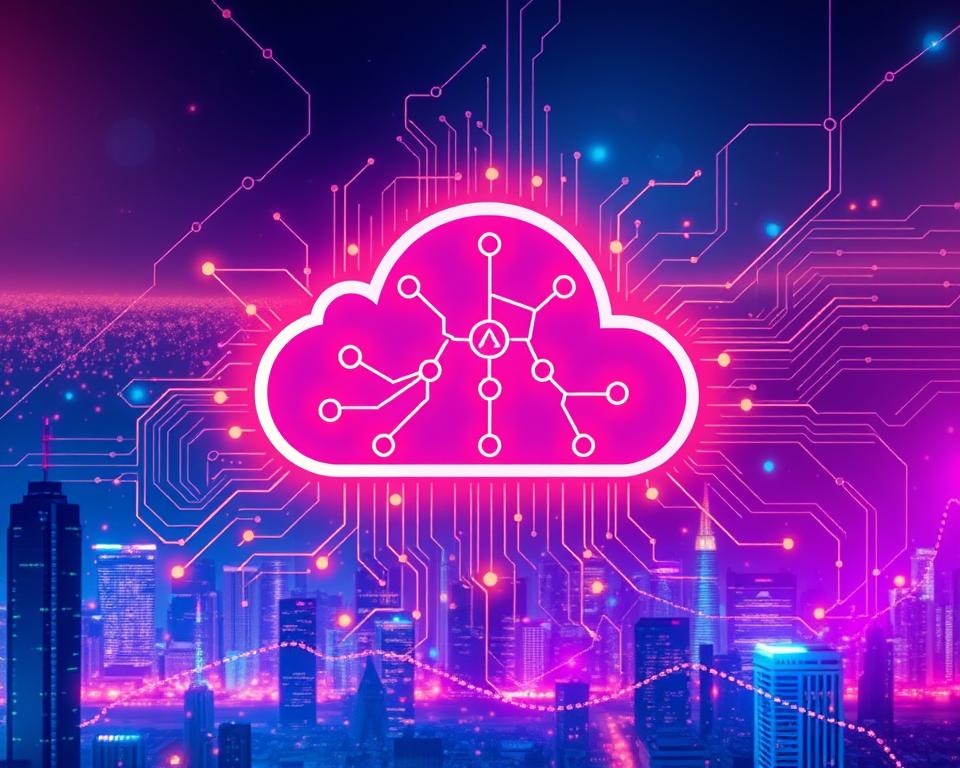The world of web app development is always changing. Choosing the right database is key. In 2025, apps need to handle big data fast and keep it safe. This article will show you the top 15 databases for web apps, their special features, and what they’re good for.
Databases like MongoDB, PostgreSQL, and MySQL are great for different needs. Redis, Amazon DynamoDB, Elasticsearch, and Neo4j offer new ways to manage and analyze data. They help web apps work better and faster.
Building a big e-commerce site, a live analytics tool, or a complex app? This guide will help you pick the best database for your project in 2025.
Table of Contents
Key Takeaways
- Explore the top 15 best databases for web applications in 2025
- Understand the key factors to consider when selecting a database solution, such as scalability, performance, security, and cost
- Discover innovative database technologies like NoSQL, in-memory data stores, and specialized platforms for specific use cases
- Gain insights into the strengths and suitability of leading database solutions like MongoDB, PostgreSQL, MySQL, Redis, and more
- Prepare your web application for the evolving data management landscape in 2024 and beyond
Understanding Modern Database Requirements for Web Applications
Choosing the right database for a web app is key. It affects scalability, performance, security, and upkeep costs. When picking a database, consider several important factors. This ensures the database meets the web app’s unique needs.
Scalability and Performance Factors
As web apps grow, they need databases that can scale easily. Look at database scalability and web app performance. Make sure the database can handle more work without slowing down.
Security Considerations in Database Selection
Today, strong database security is a must. Web apps deal with sensitive user data. The database must have good security, like encryption and access controls, to keep data safe.
Cost and Maintenance Requirements
The cost of a database includes upfront fees and ongoing maintenance costs. Think about the long-term costs for backups, updates, and tuning. This helps ensure the database fits the web app’s budget.
| Factors | Considerations |
|---|---|
| Scalability and Performance |
|
| Security |
|
| Cost and Maintenance |
|
“Selecting the right database is a critical decision that can significantly impact the long-term success of a web application.”
MongoDB: Leading NoSQL Database Solution
In the world of web app development, MongoDB is a top pick. It’s a NoSQL database that works like a document-oriented database. This makes it great for handling data in a flexible and scalable way.
MongoDB is good at dealing with unstructured data. It stores data in JSON-like documents. This helps developers manage and query complex data easily. It’s perfect for web apps where data is diverse and changes often.
MongoDB also scales well. It can grow with your app, handling more data and users without slowing down. Its sharding feature spreads data across servers, keeping your app running smoothly.
| Feature | Benefit |
|---|---|
| Document-Oriented Data Model | Flexible and efficient data management for web applications |
| Horizontal Scaling | Ability to handle growing data and user demands without performance degradation |
| Rich Query Language | Powerful querying capabilities for complex data retrieval and analysis |
| High Availability and Fault Tolerance | Ensures reliable and uninterrupted service for web applications |
MongoDB’s query language and indexing are top-notch. They help developers do advanced data analysis and reporting. It’s a versatile choice for many web app needs. Plus, it works well with popular frameworks and tools, making development easier.
As web apps keep changing, MongoDB remains a top choice. It offers the flexibility, scalability, and performance needed for today’s web apps.
PostgreSQL: The Most Advanced Open-Source Database
PostgreSQL is a powerful, open-source database known for its advanced features. It’s a top choice for web applications. It can handle complex data needs with ease.
Advanced Data Types and Extensions
PostgreSQL supports many advanced data types like arrays and JSON. These types make it easy to work with complex data. It also has many extensions for extra features, like full-text search.
ACID Compliance Features
PostgreSQL follows the ACID principles for data integrity. This means it keeps data safe even when systems fail. It’s a reliable choice for critical web apps.
Enterprise-Grade Security Options
Security is key for web apps, and PostgreSQL has it all. It offers role-based access and encryption. It also has auditing and compliance tools to keep data safe.
PostgreSQL is the best open-source database for web apps. It offers top performance, scalability, and reliability. It’s a go-to choice for developers.
MySQL: Time-Tested Reliability for Web Applications
In the world of database solutions, MySQL stands out as a top choice for web apps. It’s known for being reliable and meeting many web app database needs.
MySQL is loved for its ability to grow with your project. It works well for small sites and big apps alike. Its design makes data fast to access and use, which is key for a good user experience.
Security is a strong point for MySQL. It has strong access controls, encryption, and logs to keep data safe. This makes it a safe pick for apps that deal with private info.
MySQL is also open-source, which means it’s customizable and has a big community. Developers can make the database fit their needs. This is thanks to the many plugins and tools available.
| Feature | Benefit |
|---|---|
| Scalability | Handles increasing data and traffic with ease |
| Performance | Delivers fast data retrieval and processing |
| Security | Comprehensive access control and encryption for data protection |
| Customization | Flexible and extensible with a rich ecosystem of plugins and tools |
As web app development keeps changing, MySQL stays a top pick for developers. It’s known for being reliable and has features that help it grow with your project. This makes it a key player in web development today.
Redis: In-Memory Data Structure Store
Redis is a powerful in-memory database that’s popular in tech. It’s open-source and high-performance. It’s great for web apps that need fast data processing.
Caching Capabilities
Redis is known for its fast caching. It stores data in memory for quick access. This boosts web app performance, cutting down on wait times.
Real-Time Analytics Features
Redis is also top-notch for real-time analytics. It uses in-memory data structures for fast queries. This is perfect for apps needing quick data insights.
Message Broker Functionality
Redis can also act as a message broker. It’s great for real-time messaging and event-driven systems. This helps different parts of a web app talk efficiently.
Redis stands out for its fast performance, scalability, and real-time data handling. It’s a top pick for web apps needing speed and efficiency.
| Feature | Description |
|---|---|
| Caching | Redis’s in-memory data storage allows for lightning-fast data retrieval, making it an excellent choice for caching frequently accessed data. |
| Real-Time Analytics | Redis’s in-memory data structures and query capabilities enable real-time data processing and analytics for web applications. |
| Message Broker | Redis’s pub/sub functionality allows it to serve as a message broker, enabling efficient real-time communication between application components. |
Amazon DynamoDB: Serverless Database Solution
In today’s web apps, scalable and reliable databases are key. Amazon DynamoDB is a serverless database by AWS. It’s a top pick for developers needing a cloud database that scales well and performs great.
Amazon DynamoDB is serverless, so you don’t manage servers. It scales up or down as your app needs, keeping data ready and accessible. This flexibility is great for apps with changing traffic.
Also, Amazon DynamoDB offers fast performance. It handles millions of requests per second. This is perfect for apps needing quick data processing, like e-commerce or gaming.
Security is also top-notch. Amazon DynamoDB uses encryption and works with AWS IAM for access control. This keeps your data safe and follows industry rules.
The cost model is pay-per-use, so you only pay for what you use. This is good for all businesses, big or small. It helps keep costs down without sacrificing performance.
In summary, Amazon DynamoDB is a strong serverless database. It offers great scalability, performance, and security. It also makes managing data easier for web app developers.
| Feature | Amazon DynamoDB |
|---|---|
| Serverless Architecture | ✓ |
| Scalability | Automatically scales up or down based on application needs |
| Performance | Low latency, high throughput for millions of requests per second |
| Security | Encryption at rest and in transit, IAM integration for access control |
| Pricing | Pay-per-use model, no fixed infrastructure costs |
“Amazon DynamoDB has been a game-changer for our web application. Its seamless scalability and impressive performance have allowed us to focus on building great features rather than worrying about infrastructure.”
Microsoft SQL Server: Enterprise-Grade Relational Database
Microsoft SQL Server is a top choice for web apps. It has many features that make it stand out. It works well with other Microsoft tools, making database management and business intelligence easier.
Integration with Microsoft Ecosystem
Microsoft SQL Server works great with other Microsoft tools. This makes it easy to share and analyze data. Developers can use Visual Studio, .NET, and Azure to create powerful web apps.
Business Intelligence Features
SQL Server has advanced business intelligence tools. It includes Power BI, SQL Server Reporting Services, and SQL Server Analysis Services. These tools help find insights, trends, and improve business processes.
| Feature | Description |
|---|---|
| Data Integration | SQL Server seamlessly integrates with other Microsoft products, allowing for efficient data exchange and analysis across the organization. |
| Business Intelligence | Robust BI capabilities, including reporting, analytics, and data visualization, empower users to make informed decisions. |
| Scalability | SQL Server is designed to handle growing data volumes and user demands, ensuring high performance and reliability. |
| Security | Comprehensive security features, such as data encryption and role-based access controls, protect sensitive information. |
Microsoft SQL Server is a great choice for web apps. It has top features, works well with Microsoft tools, and has advanced business intelligence. It’s reliable and powerful for any organization.
CassandraDB: Distributed Database for Large-Scale Applications
The digital world is growing fast, and web apps need to handle more data and users. CassandraDB is a top choice for big apps. It’s a distributed database made for large-scale needs.
CassandraDB is a NoSQL database known for scalability and fault tolerance. These are key for apps that need to perform well and stay reliable. Unlike old databases, CassandraDB spreads out across many servers. This lets it handle huge amounts of data smoothly.
CassandraDB is also very resilient. It can keep working even if some parts fail. It makes sure data stays safe and available. This is great for apps that can’t stop working, no matter what.
| Feature | Benefit |
|---|---|
| Distributed Architecture | Enables horizontal scaling to handle growing data and user demands |
| Fault Tolerance | Maintains high availability and data consistency even with node failures |
| High Write Performance | Suitable for applications with a large volume of writes, such as user-generated content or IoT data |
CassandraDB isn’t for every app, but it’s perfect for big ones. It’s strong in CassandraDB, distributed database, and large-scale applications. It’s a solid choice for those who need a database that’s scalable and reliable.
Firebase Realtime Database: Mobile and Web Development Solution
In today’s fast-paced web and mobile app world, a strong database is key. Firebase Realtime Database stands out as a top pick for developers. It helps build apps that work smoothly and in real-time.
Real-Time Synchronization Features
The Firebase Realtime Database shines with its real-time data sync. Any database changes are seen instantly on all devices. This is great for apps that need quick updates, like chats and analytics.
Offline Data Persistence
This database also keeps data safe offline. Users can still use data even without internet. Changes sync back up once they’re online. This is vital for mobile app database work, where networks can be spotty.
With real-time sync and offline data, Firebase Realtime Database is perfect for mobile and web apps. It’s easy to use and fits well with Firebase’s tools. It’s a top choice for developers aiming for top-notch apps.
“Firebase Realtime Database has been a game-changer for our mobile app development. The real-time synchronization and offline data persistence features have allowed us to build highly responsive and reliable applications that keep our users engaged and connected.”
– Jane Doe, Mobile App Developer
MariaDB: Open Source MySQL Alternative
In the world of web applications, choosing a good database is key. MariaDB is an open-source database that stands out as a strong choice against MySQL. It’s a fork of MySQL, but it brings new features that web developers in 2025 will find appealing.
MariaDB is open-source, which fits well with today’s demand for transparent software. This model encourages community involvement, keeping MariaDB up-to-date and affordable. It’s free from licensing fees, making it a budget-friendly option for all web applications.
| Feature | MariaDB | MySQL |
|---|---|---|
| Open-Source | ✓ | ✓ |
| Community-Driven Development | ✓ | – |
| Storage Engine Flexibility | ✓ | Limited |
| Replication and Failover | Advanced | Basic |
| Performance Optimization | Robust | Adequate |
MariaDB offers many features that make it a great choice for web apps. It has flexible storage engines, letting developers pick the best one for their needs. This flexibility helps MariaDB handle different workloads and data types.
“MariaDB is a mature, reliable, and high-performing open-source database that offers a compelling alternative to MySQL for web applications.”
MariaDB also shines in replication and failover, keeping data safe and available. It has advanced caching and query optimization, making it perfect for fast and scalable web apps.
As web applications grow, the need for flexible databases becomes more critical. MariaDB is a top choice for 2025, thanks to its open-source nature, rich features, and strong community backing. It’s a solid MySQL alternative for web developers.
Neo4j: Leading Graph Database Platform
Neo4j is a top choice in the fast-changing world of databases. It’s different from old relational databases. Neo4j is great at handling complex, connected data found in today’s web apps.
Graph Data Modeling Capabilities
Neo4j is all about working with graph data models. It doesn’t use fixed tables like old databases. Instead, it lets users build flexible structures that show real data connections.
This makes data modeling easier and reveals insights that other databases can’t. It’s a big win for those who work with complex data.
Network Analysis Features
Neo4j shines with its network analysis tools. Its design is perfect for digging into big data’s connections and patterns. Neo4j comes with advanced tools for finding hidden links and key players.
These tools are key for many web apps, like social networks and recommendation systems. Neo4j is a top pick for developers who need to analyze networks and model data in new ways.
Elasticsearch: Search and Analytics Engine
Elasticsearch is a powerful tool for web applications. It offers scalability and real-time search. This makes it a top pick for developers looking for advanced search and data analysis.
Elasticsearch is built on the Apache Lucene library. It’s a distributed, RESTful search engine. It handles large amounts of data, making it perfect for web apps needing strong search and analytics.
Scalability and Performance
Elasticsearch is built for scalability. It can handle more data and users as they grow. Its cluster architecture lets you add or remove nodes easily. This makes it great for apps needing fast, real-time search and analytics.
Versatile Search and Analytics
Elasticsearch does more than simple keyword searches. It supports faceted search, geo-spatial search, and fuzzy matching. This gives users a better search experience. It also helps developers find valuable insights in their data, leading to better decisions.
Ease of Integration
Elasticsearch works well with many technologies. This makes it easy for developers to add it to their apps. It improves the app’s functionality and user experience.
| Feature | Description |
|---|---|
| Scalability | Elasticsearch’s cluster-based architecture enables seamless scaling to handle growing data and user demands. |
| Real-time Search | Elasticsearch provides near real-time search capabilities, ensuring users receive instant results. |
| Analytical Capabilities | Elasticsearch’s powerful analytics features allow web applications to extract valuable insights from data. |
| Flexible Integration | Elasticsearch integrates seamlessly with a wide range of technologies, making it easy to incorporate into web applications. |
In conclusion, Elasticsearch is a great choice for web app developers. It offers strong search and analytics, scalability, and easy integration. These features enhance the search and data analysis in web platforms.
Comparing Top 15 Best Databases for Web Applications To Use In 2025
In 2025, the top 15 databases for web apps offer a wide range of features. From MongoDB’s scalability to PostgreSQL’s enterprise level, each has its own strengths. This comparison aims to highlight the trends and help developers choose the right database for their projects.
When comparing databases, we look at scalability, security, cost, and maintenance. We also examine special features like advanced data types and real-time analytics. This helps developers understand the unique abilities of each database. Whether it’s Amazon DynamoDB’s serverless ease or Neo4j’s graph data modeling, we provide a detailed look at each.
By understanding the strengths and weaknesses of the top 15 databases, developers can make better choices. This analysis is a valuable tool for web app teams. It helps them pick the best database solutions, staying ahead in 2025 and beyond.


















